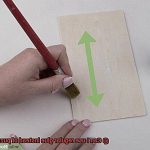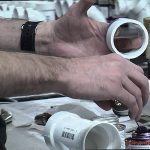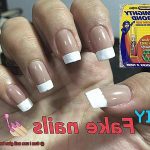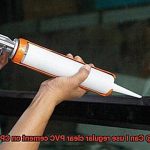When it comes to crafting art on canvas, finding the perfect adhesive is like discovering a hidden treasure. So, you might be wondering, “Can I use super glue on a canvas?” Well, buckle up because we’re about to embark on an exciting exploration of this sticky situation.
In this blog post, we’ll dive deep into the realm of adhesives to uncover the truth behind using super glue on canvas. We’ll unleash its bonding powers and examine how it holds up against different materials. Plus, we’ll spill the beans on its impact on your artwork’s endurance and preservation. And fear not. We won’t leave you hanging without alternatives tailored to your artistic needs.
Sure, super glue might seem like a quick fix for keeping everything in place on canvas. But before you go all-in with this magical adhesive, there are factors to consider. The type of fabric, compatibility of materials, and even how long you want your masterpiece to last can sway your decision.
So grab your magnifying glass and join us as we unravel the enigma of super glue’s compatibility with canvas. Together, we’ll equip you with the knowledge to make informed choices that enhance the creative potential of your art. Let’s stick together and get started.
What is Super Glue?
Contents
Super glue, known for its remarkable bonding strength, has become a staple in many households and industries. In this article, we will delve into the world of super glue, understanding its origins, applications, and addressing the question: “What is super glue?”
The Power of Super Glue:
Super glue, also referred to as cyanoacrylate adhesive, is an adhesive that forms an incredibly strong bond when it comes into contact with moisture. Developed by Dr. Harry Coover in the 1940s, this adhesive was initially intended for military purposes but soon found its way into our everyday lives.
Versatile Applications:
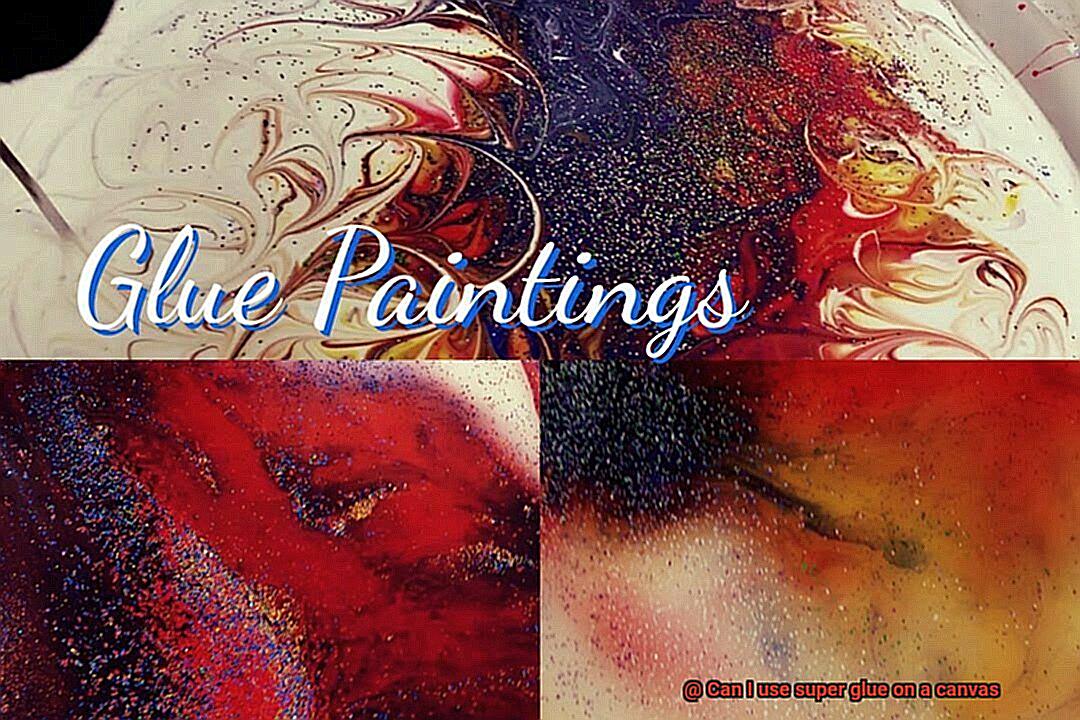
One of the standout qualities of super glue is its versatility. Its exceptional bonding properties make it a popular choice for repairing broken items made of ceramics, glass, metal, and plastic. From mending a shattered ceramic vase to fixing a broken toy, super glue’s quick-drying nature and durability make it a handy tool in many toolboxes and crafting stations.
Understanding Limitations on Canvas:
While super glue showcases impressive bonding capabilities, using it on canvas requires caution. Canvas, a flexible material commonly used in art and crafting projects, possesses unique properties that need careful consideration before applying any adhesive.
Potential Risks:
Directly applying super glue on canvas can lead to potential damage and discoloration. The strong bond created by super glue may not withstand the natural movements and stretching of the canvas over time. Accidental spills or contact with the canvas can leave unsightly stains that compromise the artwork’s overall aesthetic.
Alternatives to Super Glue:
To ensure the integrity of your canvas-based projects, it is advisable to explore alternative methods. Adhesive tapes specially designed for artwork or crafts provide a safer option that won’t damage or stain the canvas. Additionally, adhesive mediums or gels formulated for use with canvas offer flexibility and even distribution of adhesive, minimizing the risk of visible marks or discoloration.
Proceed with Caution:
If you still choose to use super glue on canvas, it is recommended to conduct a small test on an inconspicuous area first. This will allow you to assess how the glue interacts with the fabric and determine its suitability for your intended application.
What is Canvas?
Canvas is a remarkably versatile material that has captivated artists and craftsmen for centuries. This incredible fabric, crafted from cotton or linen and stretched tightly over a wooden frame, possesses a smooth and durable surface that allows paint and other mediums to be applied with precision and grace.
In the realm of art, canvas has stood the test of time as the preferred support for paintings. Its popularity surged during the Renaissance period, revered for its durability and ability to withstand the ravages of time. Even in the modern era, canvas remains the go-to choice for artists of all calibers who seek to breathe life into their visions.
Yet, canvas’s appeal reaches far beyond the boundaries of the art world. Its robust nature makes it an ideal material for crafting bags, shoes, and other accessories that demand resilience. The flexibility and adaptability of canvas lend themselves to various forms: stretched canvas, canvas boards, and canvas rolls.
Stretched canvas, ready to be adorned with artistic brilliance, features fabric already stretched across a wooden frame. Canvas boards offer a similar experience but are mounted on a rigid board instead. Canvas rolls present an expansive canvas fabric that can be trimmed and stretched onto a frame as desired.
Though canvas is a formidable ally in countless creative endeavors, caution must be exercised when considering super glue as an adhesive. While this adhesive marvel boasts formidable strength and swift drying properties, it can spell disaster for canvas. Super glue’s rigidity can compromise the very essence of this flexible fabric, leading to cracks or peeling paint over time.
Fortunately, alternatives exist for bonding canvas masterpieces together. Acrylic gel medium stands as a beacon of hope in this realm. Tailored specifically for use with canvas and other art surfaces, this adhesive offers a robust bond while preserving the essential flexibility of the canvas.
Potential Issues with Using Super Glue on Canvas
The canvas, a painter’s faithful companion, is a beloved medium for artistic expression. However, introducing super glue into this equation can lead to disastrous consequences. As an expert in the field, I have witnessed the potential issues that arise when super glue is used on canvas. In this comprehensive exploration, we will delve into the intricate details of why super glue may not be suitable for your canvas masterpiece.
Rigidity and Cracks:
Super glue is notorious for its lack of flexibility. When it dries, it becomes brittle, making it unsuitable for a canvas that undergoes movement or stretching. The rigidity of the glue can cause cracks, resulting in a loss of adhesion. Such an outcome is far from ideal for any artist seeking long-lasting durability.
Stains that Stick:
Perhaps one of the most frustrating issues with super glue on canvas is its tendency to leave behind stubborn stains or discoloration. Imagine spending countless hours perfecting your masterpiece, only to have it marred by permanent glue residue. Removing these stains can become an uphill battle, putting your artwork at risk.
Weak Adhesion on Porous Surfaces:
Canvas is a porous material that readily absorbs liquids. Unfortunately, super glue may not bond effectively with these fabric fibers, leading to weak adhesion. Over time, this weak bond can result in the glued area loosening or even detaching completely from the canvas – a nightmare scenario for any artist.
Chemical Deterioration:
Let’s discuss archival quality. Super glue is not formulated with preservation in mind. Its composition contains chemicals that can react with the canvas fibers, causing discoloration, degradation, or even deterioration of your artwork over time. If you value longevity and the quality of your piece, it is crucial to steer clear of super glue.
Canvas Compatibility:
Different canvases have distinct reactions to super glue. While some may withstand the adhesive without any issues, others may not be so fortunate. Understanding the specific characteristics and properties of your canvas is essential before reaching for that super glue bottle. Don’t risk damaging your precious work of art.
Removal Woes:
Removing super glue from canvas can quickly become a nightmare. The strong bond formed by the adhesive makes it challenging to break without causing further damage to the artwork. Scraping or using solvents can result in unsightly scratches, discoloration, or irreversible harm. Protecting your canvas masterpiece should be a top priority.
Alternative Methods for Attaching Items to Canvas
When it comes to attaching items to a canvas, reaching for the super glue might be the first instinct for many artists. However, there are alternative methods specifically designed for canvas that can offer better results. In this article, we will delve into these alternative methods, including fabric glue, heavy-duty adhesive tapes, canvas clips, sewing or stitching, and adhesive sprays. By considering these options, artists can ensure their artwork remains securely attached and free from damage.
Fabric Glue:
Fabric glues are specially formulated to bond fabric materials, making them ideal for adhering various items to a canvas. These glues come in convenient squeeze bottles or tubes with applicator tips, enabling precise application. An advantage of fabric glue is that it dries clear, leaving no visible marks on the canvas. However, it is important to note that fabric glues may not be suitable for attaching heavier or bulkier items securely.
Heavy-Duty Adhesive Tapes:
Double-sided tape or mounting tape are heavy-duty adhesive tapes that provide a strong bond. These tapes work well for attaching lightweight items to a canvas and are especially useful for temporary installations or when easy removal without damage is desired. Nevertheless, it’s crucial to consider that heavy-duty adhesive tapes may not be suitable for securely attaching heavier or bulkier items.
Canvas Clips and Clamps:
Canvas clips and clamps offer versatile alternatives for attaching items to a canvas. Canvas clips are small metal attachments that easily hook onto the sides of the canvas, providing a secure hold for various items. Conversely, canvas clamps are larger adjustable clamps designed to hold larger or heavier items onto the canvas. Both options allow for easy adjustment and removal without damaging the canvas.
Sewing or Stitching:
For a more traditional approach, artists can opt for sewing or stitching their items onto the canvas. This method works well for attaching fabric or soft materials and offers a secure attachment. By using a needle and thread, artists can carefully sew the item onto the canvas, ensuring longevity and stability. Sewing or stitching is particularly useful when working with delicate or valuable items that require extra care.
Adhesive Sprays:
Another alternative method is using adhesive sprays specifically designed for fabric or canvas. These sprays provide an even and thin layer of adhesive that can be applied to both the canvas and the item being attached. Adhesive sprays offer a strong bond while also allowing for repositioning or removal if needed. However, it is crucial to choose a spray that is compatible with the canvas and artwork to avoid any damage.
Adhesive Tapes for Artwork or Crafts
In the realm of artwork and crafts, the choice of adhesive tape can make or break a project. From securing delicate materials to creating clean edges and precise positioning, adhesive tapes play a crucial role. In this comprehensive guide, we will explore the various types of adhesive tapes commonly used in artwork and crafts, providing you with the knowledge to make informed decisions.
Double-Sided Tape:
When it comes to securely attaching lightweight materials like paper or photographs to a canvas surface, double-sided tape is an artist’s best friend. This tape offers a formidable bond while maintaining a smooth and clean surface. To ensure the longevity of your artwork, look for acid-free and archival-quality double-sided tapes that will safeguard your creations for years to come.
Masking Tape:
Although not specifically designed for canvas use, masking tape proves invaluable in certain applications. Perfect for creating crisp and clean edges during painting or when working with stencils, masking tape is easily removable without leaving any residue behind. Its temporary nature makes it an excellent choice for quick artistic fixes.
Artist’s Tape:
Crafted with a low-tack adhesive, artist’s tape shines when precise positioning is paramount. This specialized tape allows for easy removal without damaging the canvas or other materials. Opt for acid-free and archival-quality artist’s tapes that will preserve your artwork’s integrity over time.
Considerations:
When selecting adhesive tape for your artwork or craft project, longevity and archival quality are vital factors to consider. By choosing acid-free and archival-quality tapes, you ensure that your artwork remains intact and vibrant for generations to come. Additionally, take into account the weight and flexibility of the materials you’re attaching. For heavy-duty bonding or flexible requirements, alternative adhesives like glue or gel mediums may be more suitable.
Adhesive Mediums and Gels for Canvas
In the world of canvas art, finding the perfect adhesive medium or gel is like discovering the secret ingredient to unlock the true potential of your masterpiece. These remarkable products not only secure your materials in place but also contribute to the longevity and flexibility of your artwork. Join us as we delve into the world of adhesive mediums and gels for canvas, revealing their advantages and disadvantages, so you can make informed choices for your art projects.
The Limitations of Super Glue:
While super glue may offer a quick fix for adhering materials to canvas, it comes with a few shortcomings. Its rigid nature creates a brittle bond that can crack or break over time, unable to withstand the natural movements of the canvas. Moreover, its glossy finish may not be suitable for all artistic applications, altering the texture and appearance of your artwork.
Acrylic Gel Medium:
Enter acrylic gel medium, a versatile substance that provides both flexibility and durability. This paste-like wonder can be mixed with acrylic paint or used on its own as an adhesive, making it an artist’s dream. It dries transparent or translucent, maintaining the authenticity of your vision.
Archival Quality Glue:
For those seeking lasting results, archival quality glue is the ultimate choice. Formulated specifically for art conservation, these glues boast acid-free and pH-neutral properties that defy time’s grasp. They create a strong bond while preserving the integrity of both canvas and adhered materials.
Tips for Success:
Before applying any adhesive medium or gel, conduct a small test patch to ensure compatibility with your canvas and materials. Follow manufacturer’s instructions regarding application and drying times to achieve optimal results while safeguarding your artwork from potential damage.
Testing Super Glue on a Small Area of the Canvas
Congratulations. You’ve just completed an exquisite canvas artwork, and now it’s time to secure everything in place. Super glue seems like the perfect choice – it’s fast, convenient, and readily available. However, before you dive in and start gluing your masterpiece together, there’s a crucial step you mustn’t skip: testing super glue on a small area of the canvas.
Why is this step so vital? Let’s delve into the details.
Assessing Compatibility
Each canvas possesses its own unique texture, finish, and materials. Testing super glue on a discreet spot allows you to determine if the adhesive is compatible with your specific canvas. By applying the glue near the edge or under the frame, you can observe any potential damage or alteration without compromising the overall artwork.
Preventing Damage and Discoloration
Using an incompatible adhesive can lead to disastrous consequences. Some adhesives may cause discoloration, warping, or even damage to the delicate canvas fibers. By conducting a small test patch, you can identify these issues before using the glue on your entire masterpiece.
Observing Adhesion Strength
Super glue is renowned for its incredible bond, but it’s crucial to ensure that it adheres securely to your canvas without leaving behind visible marks or residue. By testing a small area, you can examine how well the glue withstands light pressure and manipulation. This step guarantees that your artwork will remain intact for years to come.
Now that we understand the importance of testing super glue on a small area of the canvas, let’s discuss how to conduct this test effectively.
Firstly, gather all the necessary materials: a small piece of canvas, a sample of super glue, a clean brush or applicator, and a non-porous surface for mixing the glue if required.
Next, select a discreet area on the canvas for the test. Choose a spot that won’t be easily visible, such as near the frame or along the edge.
Before applying the glue, ensure that you gently clean the chosen area with a soft brush or cloth. This step guarantees that you’re working on a clean surface and allows for accurate test results.
Now, apply a small amount of super glue onto the selected area using a brush or applicator. Be careful not to use excessive amounts that could seep through the canvas or create unsightly clumps.
Allow the glue to dry completely according to the manufacturer’s instructions. The drying time may vary from a few minutes to an hour, depending on the brand and type of super glue used.
Once dry, closely observe the tested area for any signs of discoloration, warping, or other damage. Check if the glue adheres securely to the canvas without leaving any visible marks or residue.
eP3xJIJ-TbU” >
Conclusion
To sum it up, super glue may appear to be a quick fix for sticking things onto canvas, but tread carefully. Its inflexibility and rigidity can lead to cracks and harm your precious artwork in the long run. Not to mention, it can leave behind stubborn stains that are a nightmare to remove.
Thankfully, there are better options out there for attaching items to canvas. Fabric glue offers a secure bond without causing damage, while heavy-duty adhesive tapes provide a strong hold for lightweight objects. Canvas clips and clamps give you versatility and easy adjustments for different materials. And if you’re into tradition, sewing or stitching ensures longevity and stability. You can even opt for adhesive sprays specifically designed for fabric or canvas, offering a robust bond with the option to reposition.
But hold on. Don’t just grab any tape or medium off the shelf. Consider their archival quality and compatibility with your canvas material. Acid-free and archival-quality options will preserve your artwork’s integrity over time.
Now here’s an essential tip: always conduct a small test on an inconspicuous area before using any adhesive on your masterpiece. This way, you can assess compatibility, prevent damage or discoloration, and gauge adhesion strength.


